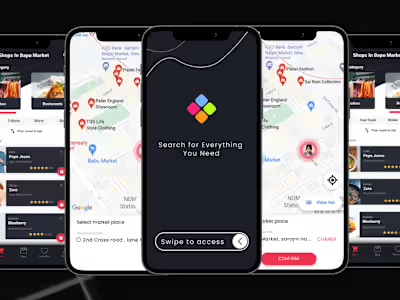Content Writing- What is Web3, and why should you care?

What is Web3
Recently the tech, crypto, and venture-capital worlds have become infatuated with a catchphrase. It's everywhere now, and if you don't put it in your Twitter bio, you aren't taking the future seriously enough: Web3.
Web3 is not a single technology, but rather a set of tools and concepts that aim to transform the present status quo from controlled platforms to decentralized platforms. The premise is that today, with the prevalence of firms like Facebook and Google, where users' data is held, they no longer have control over it. Distributed networks, such as Ethereum, are at the heart of Web3, which promises to be a "global computer" by connecting everyone through a protocol rather than a central data repository.
It's like when apps came out for smartphones. Even though they started as primary games, apps have expanded our capabilities on our smartphones. We can now use the Internet in new ways thanks to Web3, the application layer of blockchain.
Web3 is the blockchain's "app layer," and it's adding new ways to use blockchain technology.
To begin, you must first grasp the fundamentals of Web3.
Evolution of the Web: From Web 1.0 to Web 3.0
What is Web 1.0
Web 1.0 refers to the initial "iteration" that was created. It has evolved into a dynamic, constantly-changing medium with many diverse applications. Yet, over time, the internet's capabilities expanded- thanks to implementing dynamic URLs and other tools. When the internet became widespread, it became possible to distribute applications via the cloud. After so many years, today's internet hardly seems like the natural progression from Web 1.0. The internet allows the distribution of nearly any digital function previously only available in a licensed "out of the box" application.
What is Web 2.0
When compared to its predecessor, Web 1.0, the current iteration of the internet known as Web 2.0 features increased user-generated content and improved usability? In particular, social media has revolutionized the internet by making it easier for people to communicate with one another and share their ideas, insights, and perspectives with the world. Sharing ideas and information has become easier thanks to technological advancements, which have led to new forms of social organization, deeper personal connections, and increased opportunities for teamwork.
How is Web 3.0 better and different from Web 1.0 and Web 2.0?
The third iteration of the World Wide Web is commonly referred to as Web 3.0. It's a work in progress but a vision of a more user-friendly, decentralized, and open web. Decentralized data networks will be used in Web 3.0 to facilitate the sale of user-generated data generated by a wide variety of computing resources such as mobile phones, desktop computers, appliances, vehicles, and sensors. This will guarantee that users maintain ownership over their data. Most Web 2.0 applications are used for social media, streaming media, and online shopping, but Web 3.0 can provide users with much more. Features central to Web 3.0, such as the Semantic Web, artificial intelligence, and machine learning, have the potential to greatly expand the platform's reach and the quality of the user experience.
Future of Web3
Members of Web3 has just gained the ability to earn tokens, which can either be exchanged for real-world currency or utilized in voting to have a say in how the platform will develop in the future. A substantially larger number of individuals will enjoy the advantages afforded by Web3.
At this moment, the concept of starting from scratch and developing an entirely new internet may appear to be a digital dream in a galaxy far away. However, Web3 is generating significant new money, particularly from cryptocurrency investors, and initiating recent fights.
When first introduced, novel aspects of the internet invariably appear peculiar. Since quite some time ago, technologists and cryptographers have considered Web3 a great vision based purely on speculation. On the other hand, in some subcultures, the discussion at technology conferences and on the internet has been dominated in recent years by the push for a future powered by blockchain. Even large IT businesses have been moved to create internal Web3 groups due to this phenomenon.
In theory, this also implies sidestepping the fees, regulations, and caps imposed by large IT businesses. On the other hand, significant web services are beginning to join the movement.
Consequently, the expansion and success of blockchain-based social networks, transactions, and enterprises in the coming years are both conceivable and likely to occur. According to the opinions of industry professionals, the demise of social media platforms and search engines like Facebook and Google shortly is an extremely remote possibility. However, to maintain their position in the market, Web2 companies will transition to some Web3 characteristics.
Something significantly different from our typical routine might be in store for us. Despite this, some people may be negatively affected by having unlimited freedom. People are free to organize themselves into any community they see fit because there are no barriers or restrictions in their way. Despite this, it is still possible to create something horrible.
One of the company's stated values is "strong interoperability," which means that customers can carry their accounts and avatars with them when they switch from one service to another or when they switch from one website to another without being required to log in again. This is a fundamental principle that underpins Web3's architecture.
Shortcomings of Web 2.0 will be addressed in the next generation of the internet. That makes this technological advancement so interesting, despite its difficulties
What is Web3?
As stated by Packy McCormick in his book Web3, "Web3 is the internet controlled by the creators and users, coordinated with tokens." Blockchain-based tokens allow property and information to be traded without a third-party intermediary (and thus avoid transaction costs) via several types of tokens.
Web3—as well as cryptocurrencies and non-fungible tokens, or NFTs—are still in their infancy, which contributes to the raging discussion. Because so much of Web3's potential has yet to be fully realized, we're dealing with possibilities rather than realities right now.
The history of the Internet is often categorized as:
The Information Economy Web1.0
-Only for reading (Dominated by newspaper sites like Yahoo)
The Platform Economy on the Web2.0
-Reading and writing (Dominated by social media like Facebook and YouTube)
The Web3.0: The Token Economy
-Read, write, own, and carry out (DeFi and "the metaverse")
Web3's underlying principles
There are a few fundamental concepts that influence the development of Web3, even though it is difficult to give a formal description of them.
Web3 is decentralized:
Ownership of the internet is divided among its creators and users, rather than being managed and owned by a few centralized companies.
Web3 is permissionless:
The Web3 platform is open to everyone, and no one is left out.
Web3 offers native payments:
In place of banks and payment processors, it relies on a cryptocurrency system for online transactions.
Web3 is untrustworthy:
Employing incentives and economic mechanisms rather than trusting in a third party.
Why should you care?
It's not surprising that newbies and outsiders find the principles and procedures of Web3 rather puzzling; after all, for many people, coming online in the 1990s could have been more intuitive and understandable. It's obvious that Web3 is becoming increasingly popular and spoken about; like a gold rush, its adherents want in on the action, even if they don't know what they're getting into.
It's easy to find those who are skeptical of Web3's promise. Although there is consensus that NFTs and the blockchain are beneficial in specific contexts and will play a role in the future of the web, in the present, there is a great deal of vaporware and unnecessary hype to sort through. And that's not even mentioning the environmental impact of the energy-intensive processing that drives some cryptocurrencies.
Skeptics of Web3 and related technologies can argue that the vast majority of the value created by cryptocurrencies, NFTs, and the rest of Web3 will remain out of reach for the vast majority, resulting in the rich getting richer again. And it's worth mentioning that many of the bad actors from Web 2.0 are currently active in the Web3 space.
In contrast, many well-known specialists are enthusiastic about the possibilities of Web3. It isn't easy to foresee how this will develop in the future. Even though there are concerns with the current state of some Web3 implementations, there is considerable optimism that many of the shortcomings of Web 2.0 will be addressed in the next generation of the internet. That makes this technological advancement so interesting, despite its difficulties.
Is CodeMonk a Web 3.0 Platform?
Although CodeMonk is a relatively new company, it has already made an impact on the Web 3.0 developer employment landscape. CodeMonk platform companies, on the other hand, often find it easier and faster to hire the right person with the right fit. You can set up a whole team, including project timesheets, invoices, and compliance with your company's needs.
This is the first step in CodeMonk’s quest to become a DAO, which stands for a decentralized autonomous organization. CodeMonk is building a Web3 platform to help people discover remote jobs at tech businesses. CodeMonk is not a DAO yet, but that's something we're working toward. So, we're looking into existing DAOs and potential destructors to learn about their governance and structures to build a solid one that our members may benefit from in the future.
Are we on the verge of a fundamental shift?
If those who support Web3 are to be believed, the technology will coexist with Web 2.0 instead of completely replacing it.
In other words, social networks, transactions, and businesses built on the blockchain have the potential to grow and succeed in the future. It seems improbable that Facebook, Twitter, or Google will be eliminated by technological experts. But to stay relevant, Web2 companies will incorporate Web3 concepts into their products.
This means that the "walled gardens" of internet giants like Facebook, Google, and Microsoft will soon be a thing of the past for users, who will soon have the option of taking their online history and data with them wherever they go online.
It's going to be a whole new experience from what we've been used to. However, some people may suffer as a result of this unrestrained freedom. Individuals can create any kind of group they choose because nothing stands in their way. Is there anything that can be done about it?
White supremacists and other far-right groups have found decentralized social networks appealing. A blockchain-based program for data storage, called Arweave, was created by Sam Williams, and he trusts Web3 communities to decide what is acceptable online.
Overall, he thinks that a community-based vote on participation norms will be better than the current social media experience. We'll be heading towards a world where a small number of companies, run by a small number of individuals, run our online experiences if we stick with the current paradigm, he said. Such a situation magnifies Big Tech's problems. "
There is, of course, the issue of government oversight. This could soon change, though, as the Biden administration starts to write new rules for tokens based on blockchain.
A new internet will not be easy to build, but it will allow consumers to own and own their data. Now that Web3 has provided us with a reliable network, it's time to think of new ways to put it to use. Innovations are needed to overcome some of the inherent weaknesses in these systems, such as NFTs, which have previously proven successful. The evolution of Web3 and the development of blockchains are two of the most important things to keep an eye out for in the future of dapps.
How far away is Web3?
The Web3 ecosystem is still very much in its infancy, but it's not as far as one may expect. Investors, particularly crypto backers, are already putting money into the Web3 pot, even if a revolution in the internet won't come immediately. Again, NFTs are speeding up the discussion and demonstrating the possibility of a cryptocurrency-operated world. In just the last year, there has been a huge rise in interest in cryptocurrencies, progress in layer 2 scaling solutions, large-scale experiments with new types of government, and a revolution in digital identification.
But analysts say Web3 isn't likely to replace Web 2.0 but rather run alongside it. Twitter, for example, is already searching for ways to combine the two. This study reveals that Web3 is more than just a gimmick, making it all the more important for you to pay attention.
We'll have to wait and see. The future will make the final decision.
Further readings
Like this project
Posted Feb 7, 2024
Web3 is a new generation for how the internet works. But why is it so important? Let's find out what is web3 and how you should care.








